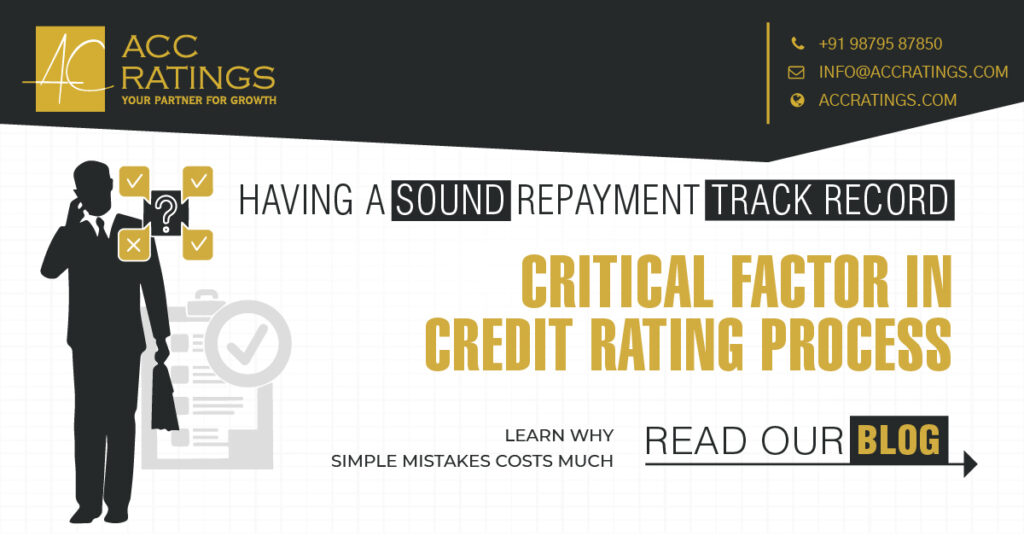How having a sound repayment track record has become a critical factor in credit ratings process in recent times??

The credit rating of an entity indicates its ability to timely repayment its debt obligations. While there are many factors affecting credit rating of an entity, having a sound repayment track record has become a very crucial factor considering the current tight regularity environment and improved information flow from the lenders to the rating agencies
SEBI Guidelines for Credit Rating Agencies

In recent past SEBI has issued several circulars which has totally change the way the credit rating agencies analyze the repayment track records and account conduct of an entity.
There’s a new norm for “defaulting”: Let’s see why?
SEBI through its Master Circular for credit rating agencies dated May 02, 2018 (Presented Here) , has defined very stringent default recognition criteria of ‘ONE RUPEE ONE DAY’ delay for instruments/facilities with pre-determined repayment schedule and ‘30 DAY OF OUT OF ORDER‘ in case of other facilities/instruments. Hence, as per the circular even a single day of delay for a single rupee it should be considered as default and the rating of the entity should be downgraded to ‘D’. Also, the same circular provided for curing period/cooling period for the upgrade of the credit rating once the entity starts making regular repayments.
It’s mandatory for rating agencies to analyze bank statements

Further, in August 2018, the RBI has directed the credit rating agencies to seek and critically analyze the bank statement of the entity, hence now it has become mandatory for the rating agencies to analyze the bank statement as against the earlier practice of only seeking written or oral confirmation from banks about the conduct of the accounts.
Mandatory reporting on defaulters :
Apart from that as per RBI guidelines circular DBS.OSMOS. No.14703/33.01.001/2013-14 dated May 22, 2014 and subsequent amendments there to, bankers are required to share information about the default on weekly basis of the borrower having aggregate exposure of over Rs.5.00 cr .
Hence, in the current scenario, having a sound bank account without any recent delay or default in repayment of debt becomes the pre-condition for the credit rating exercise.

What is the way forward if the entity’s bank account conduct is not up to the mark or the entity’s credit rating is downgraded…???









Pingback: Not happy with current credit rating with your organization? - Can it be changed? - A Case study - Amrut Corporate ConsultingAmrut Corporate Consulting
Pingback: One Time Restructuring (OTR) and It's Impacts - Amrut Corporate ConsultingAmrut Corporate Consulting
Pingback: ECLGS 2.0 – Emergency Credit Line Guarantee Scheme - Amrut Corporate ConsultingAmrut Corporate Consulting
Pingback: Credit Risk Assessment Framework - Amrut Corporate ConsultingAmrut Corporate Consulting